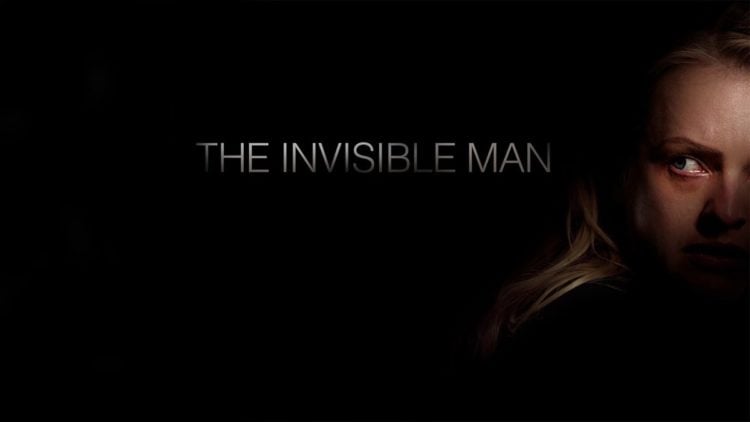
In the 1933 classic horror film The Invisible Man, Dr. Jack Griffin (memorably played by Claude Rains) embodies the mad scientist. He figures out a way to become completely invisible, but, as luck would have it, goes insane along the way. The film is ostensibly about this murderous wack-job of a scientist but it’s just as much a warning on the dangers of science and unfettered research. The latter is, of course, a theme that runs throughout all speculative cinema: Are we humans able to manage progress and make good decisions about the technologies we invent?
Eighty seven years later we have a new horror movie with the same title, and, surprisingly, there’s an element of commonality: The invisible man is again a mad scientist, with an emphasis on “mad”. The scientist is Adrian (Oliver Jackson-Cohen), and he’s kinda possessive towards his live-in girlfriend Cecilia (Elisabeth Moss) – as in completely, overwhelmingly, and dangerously controlling. Late one night she escapes over the wall of his high-tech compound (curiously reminiscent of Tony Stark’s mansion in the Marvel movies) and just barely gets away, with the help of her sister Emily (Harriet Dyer).

Psycho, obsessive, über-rich ex-boyfriend? If you guessed “woman in jeopardy + crazy stalker” then you have the basic premise of the film. Cecilia is understandably terrified by her close escape and refuses to even leave the house where she’s secretly staying with her friend James (Aldis Hodge) and his teen daughter Sydney (Storm Reid). But then there’s good news: Adrian has committed suicide so Cecilia is finally safe. Or is she?
The Invisible Man is a rewrite for our modern era, but the core story is surprisingly disempowering throughout almost the entire film. A cowering, powerless woman and the people in her life all thinking the worst of her, disbelieving her shrill accusations of an “invisible” attacker. Time and again. Even as objects appear from nowhere and strange things keep occurring. It culminates with Cecilia being confined to a criminal mental facility; clearly she’s gone insane and is a danger to others.

There’s actually a lot to like about this retelling of the mad scientist obsessed with the fearful woman story, but oh, the tropes. There are so many plot and logic holes that one can’t help wonder if there’s a 4 1/2 hour “directors cut” that actually explains how it all fits together. There’s evidence presented to police and ignored. Footprints that aren’t measured. Blood that isn’t analyzed (or even remarked upon!). Bodies that aren’t tested or autopsied and, later, are conveniently ignored because they’d just slow down the plot. The Invisible Man also features lots of jump scares (though almost all are quite obvious) and that most implausible of tropes: The super-strong bad guy. Nothing hurts this invisible fellow but he can easily take out even the toughest of guys with a single blow.
Still, it’s a very competently assembled big budget horror film and the audio and soundtrack are amazing. See it in a Dolby or RPX theater and you’ll be anxious and holding your breath through most of the film, even as you know just what’s about to happen anyway. This is also due to a solid performance that Moss delivers as the fearful, haunted protagonist.

Could they have surprised us with the writing and have Cecilia an empowered woman fighting back from the first scene? Could they have had some ambiguity about whether Adrian was really a controlling man or that Cecilia had a persecution complex that caused her to imagine everything? Yes, those would have been great additions to the rather pedestrian script. But The Invisible Man is still a good jump-scare horror film, even with its tired tropes and predictability.
